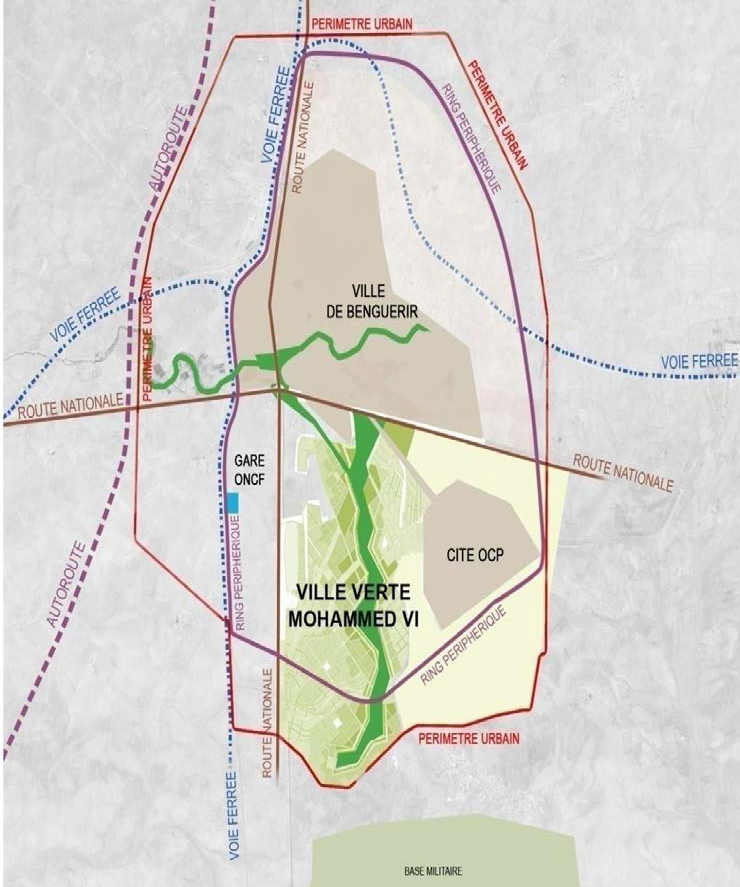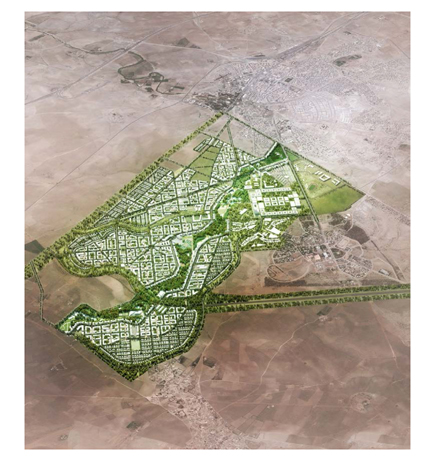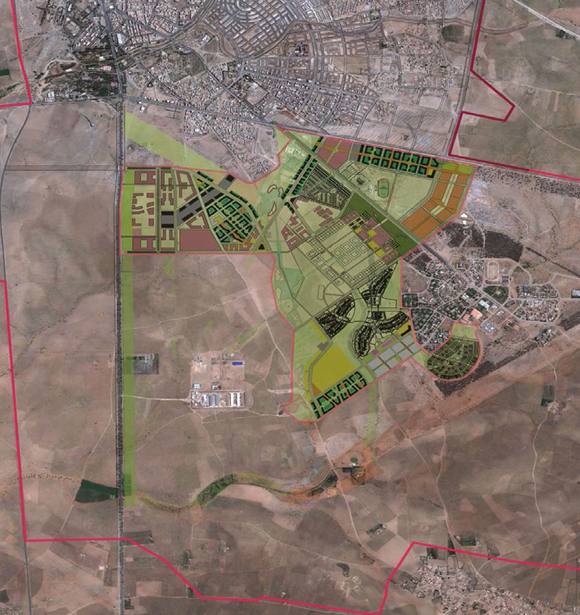|
|
King Mohammed VI Green City (Ville Verte Mohammed VI), Morocco, Africa |
|
|
|
|
|
|

source:

source:
|

The plan for the Green City King Mohammed VI (VVM6) was established in September 2010, with the aim to ensure the transformation of the town of Benguerir from a simple transit point to a real urban centre able to connect the north and the south of the Kingdom. Ville Verte Mohammed VI (VVM6) is initiated, financed, designed and constructed by Office Chérifien des Phosphates (OCP), a private Moroccan company and the world’s largest exporter of phosphate fertilisers. The New Town is intended to showcase OCP’s commitment to environmental responsibility and is the first city in the African continent to participate in the Leadership in Energy and Environmental Design (LEED) Neighborhood Development certification process.
Inspired by Cambridge, Massachusetts, VVM6 is designed around the new University Mohammed VI Polytechnic (UM6P), which was built first and housed students and staff before construction began on the rest of the New Town. By combining an engineering university with a platform for city-scale experiments in renewable energy techniques, the city hopes to continue pushing for eco-innovation and set a precedent for green building in Morocco, providing the country of a vital position in the competitive international scenario.
The project carries great expectations but also challenges to be faced: how to deal with the existing population of Beneguerir, struggling with an high unemployment rate; how to develop and guarantee the necessary financial structure, attract new investments and obtain government support and, above all, how could it negotiate with the Moroccan Authority of Renewable Energy to get the necessary regulations to generate city own power, in order to become a real “Green City.”
Urban Fabric
The geometrically organised master plan of the city is defined by narrow streets, squares and a central axis. This regular urban grid provides development flexibility, and can easily evolve to ensure the expansion of the whole functional program. The scheme encourages pedestrian circulation, while the courtyards, gardens and semi-covered streets bring together students and teachers, thus promoting intellectual and social exchange, and strengthening the sense of community. Residential clusters and facilities on both sides, the central pedestrian area is the backbone of the project. This main artery gathers the daily activities both for teachers and students and guarantees permanent exchange between campus users and with the city and its future extension towards the east.
Neighbourhoods that are classified into family and student residences are fully equipped. Their public services management includes waste sorting, reuse and recycling, optimisation of urban transportation. There are solar panels, energy-saving HVAC equipment, water recycling centres. The city also proposes Green Energy Park (centre for research and development), hotels, healthcare centres, shopping centres, administrative buildings, mosques, a theatre, mediateca, sports facilities, schools.
source: http://www.newcitiesfoundation.org/
https://newcities.org/cityquest-mohammed-vi-green-city-morocco-designed-development-engine-incubator-research-hub/
http://www.ocpgroup.ma/sustainability/green-cities
https://www.archdaily.com/866824/universite-mohammed-vi-polytechnique-ricardo-bofill |
|
2008 - 2024 disclaimer
|

